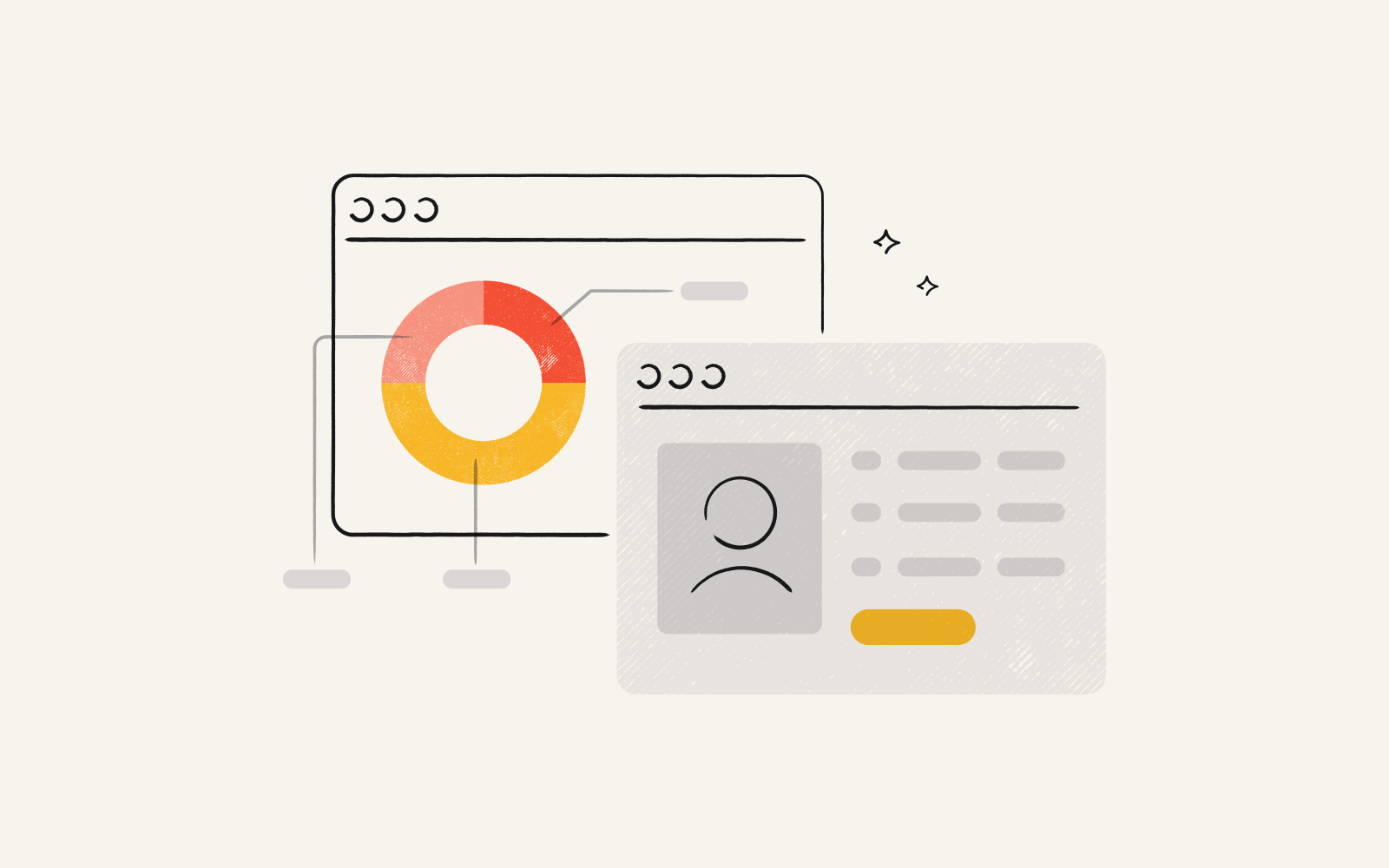How to recruit participants for UX research studies in 10 steps
By Amanda Stockwell|9 min read|Updated Feb 22, 2024

User experience is all about tailoring what we create to suit the specific needs of the folks who will be using it. Ideally, we gain a deep understanding of how our users think and what drives them, which guides our product decisions.
Making sure you’re talking to the right people is the way to ensure that what you build will be successful.
But here's the thing: finding the right people to join our research sessions can be a challenge. With so many methods and channels for recruitment, it's easy to feel overwhelmed.
Below, we’ll run through each step of the recruitment process and address the challenges inherent to each phase.
Step 1: Outline your research goals
The most important step in any research effort is to determine the specific questions you’re looking to answer, and what decisions you’re trying to make. Your goals should drive every other decision when planning UX research efforts.
Your team might have tons of open questions or very broad goals, so narrow your focus and plan research around one digestible question at a time.
For instance, rather than aiming to evaluate an entire product’s usability, clarify that you want to identify issues in the onboarding process, or evaluate core tasks for one user group.
The more specific your research goals are, the easier it will be to figure out which methodology to use and plot next steps accordingly.
You may end up being able to combine multiple goals into one study, but only if the associated methods are aligned.
For example: you might want to tackle multiple different questions about the ease of use of your onboarding flow in one usability study effort.
Collaborate with your product, design, development, and other stakeholders to determine what’s most important in your context.
Prioritizing as a team will ensure everyone is bought in to research from the beginning.
Step 2: Select a research methodology
We have many tools in our arsenal as UX researchers, and each methodology collects different kinds of data in different ways.
Each methodology is optimized to provide different sorts of insights. Think about what kind of data you need to address your core goal: if you need to count or measure something, look at quantitative methods. Otherwise, look for something qualitative.
If you’re interested in observing actions, check out behavioral methods. Otherwise, look to attitudinal methods, etc.
Next, think about the specific uses of the different techniques. Need to assess how well a new design works? That’s best done with a usability test.
Need to learn about patterns of behavior over time? Probably a good fit for a diary test. Want to learn about how people use your products in their day-to-day lives? You’ll likely want to conduct some ethnography or a field study.
There isn’t usually just one way to answer a question, and you may not always have the resources to conduct an optimal study.
Get familiar with the different methods, their best uses, and their limitations so you can identify the best way to capture what you need.
Step 3: Identify your target audience
The quality of your research relies directly on the quality of your research participants.
Think about who you need to learn from to answer your core questions. In many cases, this means participants are either existing users or are representative of the kind of users you target. Customer profiling can be a great way to identify these users.
Sometimes your goal is to figure out who the users or potential users are. In that case, you’re going to have to start with some assumptions about their shared traits.
Regardless, consider the behaviors and traits that define these people rather than general demographic or psychographic information.
Maybe geography matters if you need feedback on a weather app, or age matters if you’re looking to understand outlooks on retirement savings.
In general, what people do will matter much more than who they are. You may also want to specify anti-targets, or traits you definitely do not want to include.
For example: if my goal is to uncover issues for new users of a business expense software, my target audience would need to include people responsible for tracking and reviewing expenses at work, and who do not already use that system.
Step 4: Decide how large your sample size will be
Your goal and methodology will help you determine the appropriate number of research participants. For quantitative methods, like surveys, there are formulas to calculate statistically relevant sample sizes. Many tools have calculators embedded, or you can look up “sample size calculator.”
In UX work, we don’t always need to aim for statistical significance, but it’s a good idea to calculate and then adjust if necessary.
For qualitative efforts, there are unfortunately no standard calculations. However, there is a commonly quoted study that suggests we use 5 participants for each usability study.
While I’m certainly not arguing with Jakob Nielsen, I want to add a reminder that his calculation is based on users of the same type and specifically optimized to catch errors in simple usability tests, so it doesn’t apply to all qualitative methods.
Five is a good starting point, but may still be too few participants to find patterns, especially in exploratory efforts.
Generally, the less specific your objective and the more diverse your population, the more participants you’ll want to include.
When in doubt, start with at least 5 similar participants and plan to reassess after an initial analysis.
Step 5: Write a screener
Once you’ve determined your participant characteristics, it’s time to make a screener, which is just a survey that helps you identify who will be a good fit and weed out those who aren’t.
Take the characteristics you outlined in step 3 and craft questions to help you see who fits and who doesn’t. Remember to focus the questions on behavior and motivations rather than demographics, unless it’s specifically relevant to your goals.
Be sure to include context relevant to your specific goals too: for example, the same person might have really different habits for cooking a weeknight dinner versus planning a holiday meal.
If your goal is to evaluate how easy or not a meal planning app is for everyday meals, make sure you specify.
Here are a few tips to guide the development of your screener:
Follow survey best practices.
Ask only what you need to determine if someone is a good fit.
Include open-ended articulation questions to both verify hard-to-ask-for information and get a sense of how likely someone is to respond in real life.
Once you have the questions crafted, you’ll either need to host and promote the survey yourself, or use it as an input in your recruiting process. More on that later.
Step 6: Build an incentive strategy
As you’re considering who to include and how to find them, you also need to consider a strategy to compensate participants for their time.
The first question most folks ask is, how much?
You don’t have to spend too much time on this step – we can answer that question for you. We partnered with The Decision Lab to develop a research incentive calculator that determines exactly how much you should pay participants based on:
Study type
Study duration
Incentive type
Sensitivity of topic
Target population
Participant income (estimate)
Sample size
At a high level:
Your baseline pay should be $1.76 a minute
You should pay more for qualitative efforts like interviews, and
You should pay professionals more than students.
You’ll also need to consider how to get the incentive to participants. If you end up using recruiting services or tools, they may offer or require you to use their integrated incentive platforms.
If it’s up to you, you’ll need to think through availability, preference, and ease of use for the participants and your team.
You’ll always need to consider the specific audience you’re recruiting, but our research shows that participants tend to prefer cash transfers like Venmo or PayPal, as well as Visa prepaid cards.
Tremendous is a simple way for researchers to send incentives to participants almost anywhere in the world, at scale. We offer over 2,000 redemption options, including Venmo, PayPal, and Visa prepaid cards.
Step 7: Determine participant sources
Now, you’re finally ready to start locating potential participants. The best place for that will, of course, depend on who you need to talk to.
If your target audience is existing users and you have open communication channels, like email lists or a company social media presence, try sharing an invite and screener there first.
Remember to adhere to data privacy and communication rules. Only looking at existing users risks inherent bias, but is often cheap or free, and it may get higher engagement than other options.
If the population you’re looking for engages with in-person or online communities, like support groups or professional Slack communities, try reaching them where they’re at. You could physically show up to a location or advertise in their online community.
If you’re unsure about how to access people or have a niche target, you can turn to professional recruiting services.
These organizations have panels of users ready to give feedback that you can pay to access. Some handle logistics like screening and scheduling for you as well.
Some UX research tools also have panels of participants and embed both the participant and your recruiting tasks into their platforms.
Regardless, be sure to tailor your invitations to each channel and review responses regularly. You may want to experiment with some different copy or adjust incentives if you aren’t getting much of a response.
Step 8: Schedule participants
Regardless of where you find participants, setting a calendar and finding mutually agreeable times to meet for moderated sessions can be time-consuming.
If you can, dedicate a few days to research and consider setting specific blocks of time for participants to sign up for. That way, you can proactively invite stakeholders and plan your schedule accordingly, making sure to leave yourself time for breaks and debriefs.
If possible, leave 30 minutes in between each session and book no more than 4 or 5 sessions a day so you can stay fresh and focused.
If you use a recruiting tool or an embedded panel in a UX tool, there will likely be a scheduling tool where you can preset times for participants to sign up for.
If you’re using a full-service recruiting firm, you can probably just tell them the time slots you’re looking for and they will handle all the logistics. If you’re able to directly contact potential participants, try a tool like Calendly that allows you to set slots and invite participants to book themselves into whatever time is available.
Step 9: Communicate, communicate, communicate
After all the hard work of finding, identifying, and scheduling participants, how do we make sure they actually complete the research?
This comes down to basic communication. Recruiting firms will typically have a specific invite and reminder process, so you just need to be sure you provide them with accurate information to pass on.
Be sure to set expectations as clearly as possible about when, where, and how participants need to show up.
DIY recruiting tools or embedded panels may allow you to customize communications, but they likely won’t allow direct contact with participants outside of the tool.
If you’re able, send a personal note thanking folks as they sign up, setting expectations, providing contact information, and reminding them to reach out or reschedule if needed.
If you’re recruiting on your own, send calendar invites with all the same information as soon as someone is booked, and don’t skimp on reminders in various channels.
Following up the day before and a few hours before the interview itself with reminders to rebook or reach out with issues can be extremely helpful, and it’s way better to rebook someone than to sit around waiting in an empty session.
Remember that even if you follow all best practices, it’s normal for participants not to show up occasionally. Consider recruiting and scheduling extra participants as budget allows.
Step 10: Thank participants
Last, but certainly not least, send a final thank you along with the participant’s incentive. Do it right after the session is completed to make sure nothing slips through the cracks on busy research days.
The easiest way to send an incentive and a thank-you note is with Tremendous.
You can automate incentives so they’re triggered as soon as a session ends, or upload participants in bulk via CSV.
We integrate with a number of tools you’re probably already using, including User Interviews, Qualtrics, RallyUXR, Great Question, Typeform, SurveyMonkey, and more.
Conclusion
There are a lot of moving parts to consider when launching a research study. It can be overwhelming. But if you keep the following in mind, the recruiting process should go off without a hitch:
Clearly define research goals and let that drive your decision-making
Design your study methodology and sample size based on identified goals
Focus on identifying the core behaviors and traits of your target audience
Match your incentive strategy to study design and participant preferences
Source participants appropriately
Provide clear directions, ample reminders, and easy ways to reschedule
Remember to show gratitude
The simplest way to send incentives to research participants just about anywhere in the world is with Tremendous. Sign up now and send your first incentive in minutes, or chat with our sales team.
Published February 22, 2024
Updated February 22, 2024


